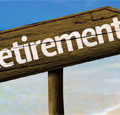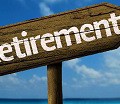How often do you think about retirement? Probably not much, if you’re anything like 68 percent of Americans. In fact, even if your employer offers a 401(k), chances are decent you haven’t even touched it.
Who can blame you? Retirement is still 20, 30 or even 40 years from now, and 401(k)s aren’t worth the trouble. Why worry about tomorrow, when you have enough problems on your plate today?
Well, it’s precisely because retirement is so far into the future that you should be worried. Anything can happen between now and the point when you’re officially considered a “senior citizen.” Taxes can go up, interest rates can go down and economies can collapse. As anyone who’s lived through those events will tell you, it’s not pretty.
Luckily, it’s not too late to save for retirement. For starters, you can follow this general guide to making your senior years as cushy as possible.
Check Out Your Retirement Plan Options
Your 401(k) isn’t the only option. You also have the traditional IRA, the Roth IRA and other plans you may be eligible for. In case you’re overwhelmed by all those choices, TIME has a table of retirement plans.
Keep in mind, however, that many of these plans require you to meet a certain set of criteria, so check those before you apply.
Match Your Company’s Contributions
If your company puts four percent into your 401(k), put in four percent. If they put in six percent, put in six percent too. Since contributions are pre-tax dollars, you’re essentially reducing your taxable income today.
That’s not to say you won’t pay taxes in the future. After all, your 401(k) is tax-deferred, not tax-free. Even so, the taxes you’ll pay once you hit retirement age will be far lower than the taxes you would’ve paid today had you chosen not to match your employer.
(Re)Allocate Your Assets
Obviously, you can’t put all of your income into your 401(k). If you want to build a solid retirement plan, you’ll need to decide which of your assets should be tied up in what, and how much.
Take cash, for example. It’s the easiest financial resource to tap into when you’re in a pinch. But when prices go up at a rate higher than the rate on your savings account, you lose purchasing power. For that reason, you also need to put part of your cash into bonds, stocks or commodities.
Have a Conservative Outlook
When we say “be conservative,” we’re not suggesting you don’t take any risk at all. Taking risks is necessary to make money in any economy. However, those risks need to be calculated.
Picture your worst-case scenarios. Factor in your current financial situation, the general state of the economy and history. What would happen to your finances if you get disabled? If prices go up by a certain rate? If the government decides to raise taxes for any reason?
Given what you know, decide which financial instruments can help you weather those worst-case scenarios. Check how easy it is to bail out of an investment in case you read the cards wrong.
Get Expert Help
Unless you’re already an expert, the idea of making financial projections 10 years into the future may be too difficult or time-consuming. If you don’t have the time, energy or resources to study the technical side of asset allocation, get a financial planner on board.
Of course, you shouldn’t choose just any financial planner. This person should have tons of experience to back them up. If you’re lucky, you can get someone like Keith Springer, who’s had 20 years of experience as an investment advisor and has made multiple appearances on CNBC, Bloomberg, CBS and other high-profile media outlets.
How to Protect Your Retirement Savings – Over to You
Now that you have a general blueprint for retirement success, let’s hear your thoughts. What strategies have you implemented, if any, to save towards retirement, and which ones worked — or didn’t work — for you? We’d love to hear from you in the comments!
Anum Yoon is a personal finance blogger and writer. She created and maintains her personal finance blog Current on Currency. You can subscribe to her blog newsletter right here for her weekly updates.









I have a Roth IRA, primarily with mutual funds & some ETFs that are a mixture of large, mid, and small cap funds. Some are balanced, while I have some growth & value. I primarily focus on index funds and dividend funds. All the direct stocks I own, are companies that pay dividends like Proctor & Gamble. They’ve been somewhat flat since i bought them several years ago, but I buy their products so that’s why I went with them over J&J or a different consumer staple.
I tried to do momentum investing with one particular newsletter for a little while, but didn’t see the benefit in constantly trading mutual funds. I’m more of a buy & hold investor.
Josh recently posted…A Student Loan Manifesto